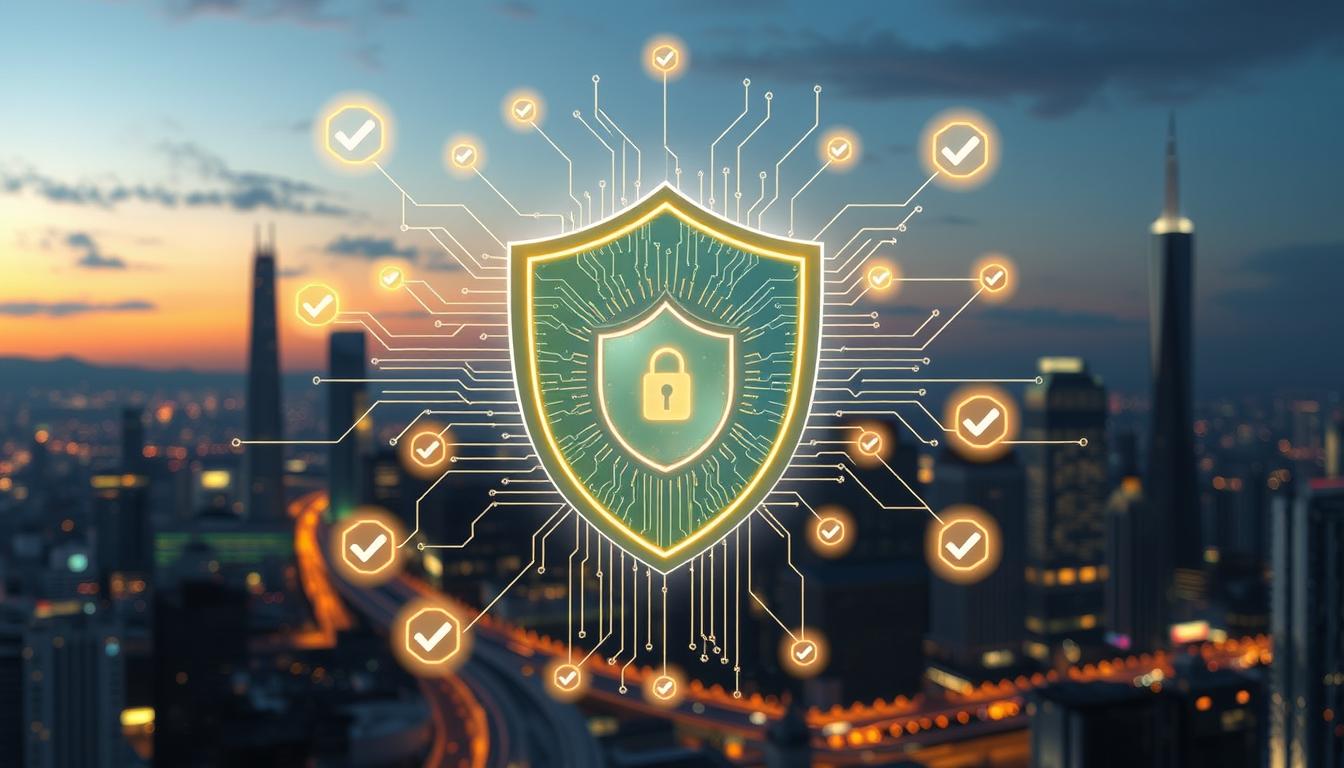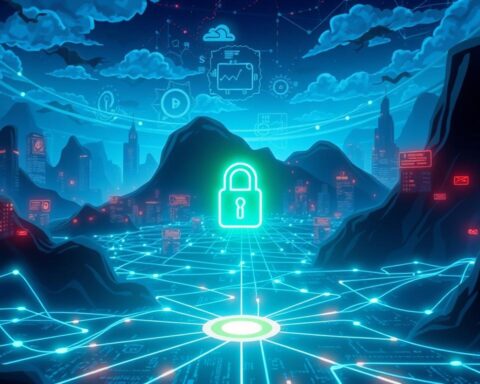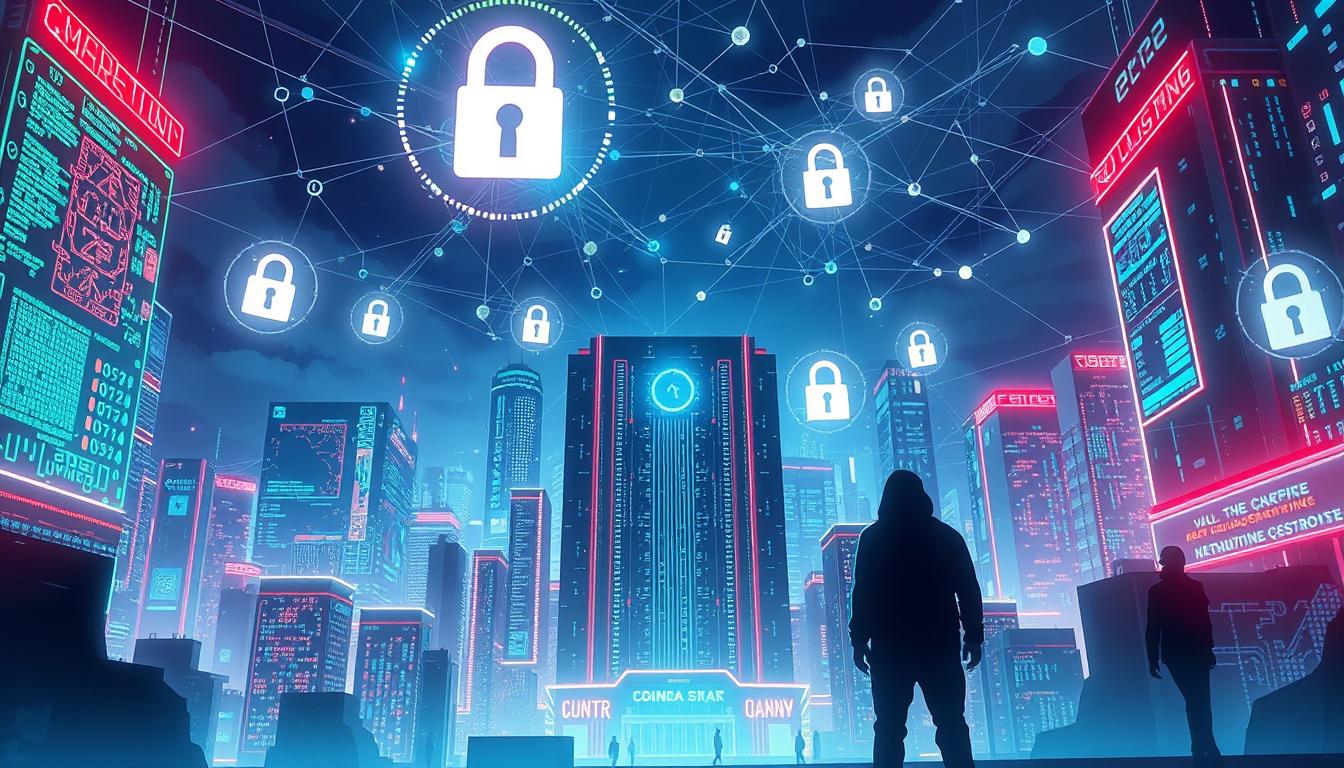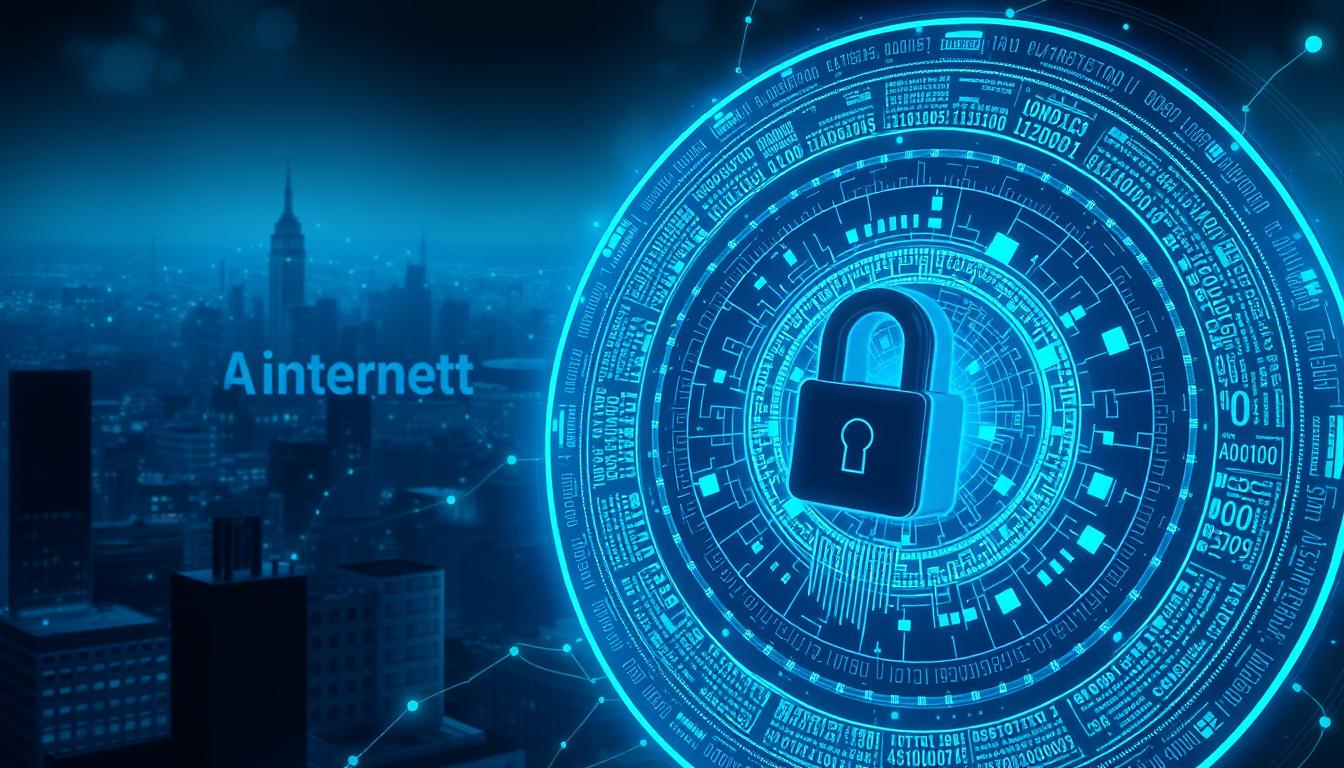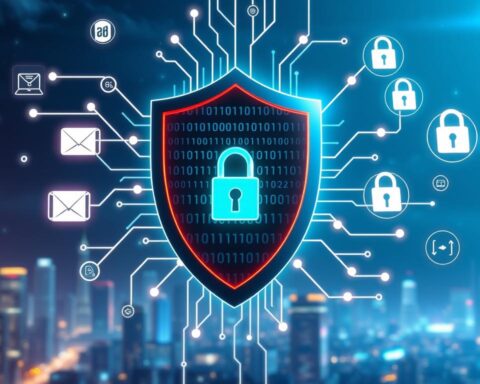Nearly 70% of organizations face a cyberattack at least once1. This shows how critical compliance is in cybersecurity. To fight these threats, organizations must follow strict compliance rules. These rules include ISO 27001, NIST 800-171, and PCI DSS, helping them stay safe2.
Government contractors must follow NIST 800-171 to protect sensitive information2. By focusing on compliance, companies can lower their risk of cyber attacks. This also helps keep their reputation and customer trust strong, which is key in cybersecurity2. For more on cybersecurity compliance, check out cybersecurity compliance resources.
Key Takeaways
- Compliance is a critical aspect of cybersecurity, helping organizations protect themselves against cyber threats.
- Implementing effective compliance strategies can reduce the risk of cyber attacks and protect reputation.
- Compliance frameworks such as ISO 27001 and NIST 800-171 guide organizations towards enhanced cybersecurity resilience2.
- Companies with strong compliance programs are 50% less likely to experience a significant data breach compared to those with weak compliance1.
- Regular software updates and antivirus software can reduce vulnerabilities and malware infection rates1.
- Why compliance matters in cybersecurity is essential for maintaining customer trust and protecting against financial losses.
Understanding Cybersecurity Compliance Fundamentals
Cybersecurity compliance is key for any organization. It makes sure the company follows laws and standards. Not following these can lead to big fines and harm to the company’s image3. It also helps protect data and manage risks4.
Compliance programs focus on stopping and handling cyber threats. They also make sure data stays safe and available. Laws like GDPR protect personal info, affecting many companies4. A good program helps spot and deal with threats fast4.
Here are some main points about cybersecurity compliance:
- Using technical controls like passwords to fight cyber threats4
- Doing regular risk checks to meet rules5
- Following standards like HIPAA, GDPR, and PCI DSS to keep data safe3
By following these steps, companies can show they care about cybersecurity. They also get the benefits of being compliant4.
| Cybersecurity Compliance Standard | Description |
|---|---|
| HIPAA | Mandates specific security controls for electronic protected health information (ePHI)3 |
| GDPR | Regulates the protection of Personally Identifiable Information (PII)3 |
| PCI DSS | Sets compliance requirements for entities that store, process, or transmit cardholder data3 |
The Critical Role of Compliance in Modern Cybersecurity
Compliance is key in today’s cybersecurity world. It helps organizations stay safe from cyber threats. They do this by following the best practices and cybersecurity regulatory requirements. Viet Minh Nguyen says compliance is not just a one-time thing. It’s an ongoing effort that needs constant checking and bettering.
By focusing on compliance, companies can lower their risk of cyber attacks. This is vital for keeping their sensitive data safe. It’s all about keeping up with cyber compliance significance.
Not following the rules can lead to big problems. For instance, Instagram got fined $403 million for breaking GDPR rules6. TikTok was fined $370 million for similar GDPR violations6. These cases show why following the rules is so important.
To meet these rules, companies can take several steps. They can use risk-based controls to keep data safe7. They can also set rules for handling customer data based on five key principles7. By doing these things, companies can show they take cyber compliance significance seriously.
For more on why compliance matters in cybersecurity, check out this link. It explains how compliance helps protect companies from cyber threats.
Major Regulatory Frameworks and Standards
Cybersecurity governance and compliance are key for protecting data and keeping customer trust. Many regulatory frameworks and standards help organizations build strong cybersecurity programs. NIST 800-171, for example, outlines 14 control families and 110 controls to protect sensitive information8.
Some important regulatory frameworks and standards include:
- HIPAA, which has two main rules: The Privacy Rule and the Security Rule, to protect health information8
- PCI-DSS, with 12 primary requirements and many sub-requirements for network and application security8
- GDPR, which can fine companies up to €20 million or 4% of their annual revenue for not following the rules9
These frameworks and standards are vital for organizations to follow cyber compliance and keep customer trust. By following these rules, companies can lower the risk of cyber attacks and protect important data. As Viet Minh Nguyen points out, these regulations are essential for keeping information secure.
Organizations must keep up with the latest rules and standards for good cybersecurity governance and compliance. This means doing regular security checks and using controls to protect data. By focusing on cybersecurity, companies can keep customer trust and lower cyber attack risks.
| Regulatory Framework | Description |
|---|---|
| HIPAA | Protects Protected Health Information (PHI) |
| PCI-DSS | Protects cardholder data |
| GDPR | Protects personal data of EU citizens |
Why Compliance Matters in Cybersecurity: Benefits and Consequences
Cybersecurity compliance is key for companies to fight off cyber threats and keep their data safe. By focusing on cyber compliance, companies can lower the chance of cyber attacks and keep customer trust. Cybersecurity experts say not following rules can lead to big financial losses, harm to reputation, and legal trouble10.
Not following rules can cost a lot, with fines and penalties for not meeting standards like HIPAA, PCI-DSS, and GDPR. For instance, HIPAA fines can go up to $50,000 per mistake, depending on how serious it is10. Following good cybersecurity practices can help avoid these costs and keep data safe.
Not following rules can also hurt a company’s reputation and lose customer trust. Studies show angry customers might come back, but fearful ones often leave for good11. By focusing on cybersecurity compliance, companies can keep customer trust and ensure their success.
| Regulatory Framework | Penalty |
|---|---|
| HIPAA | Up to $50,000 per violation |
| PCI-DSS | Up to $100,000 per month |
| GDPR | Up to 20 million euros or 4% of global annual revenue |
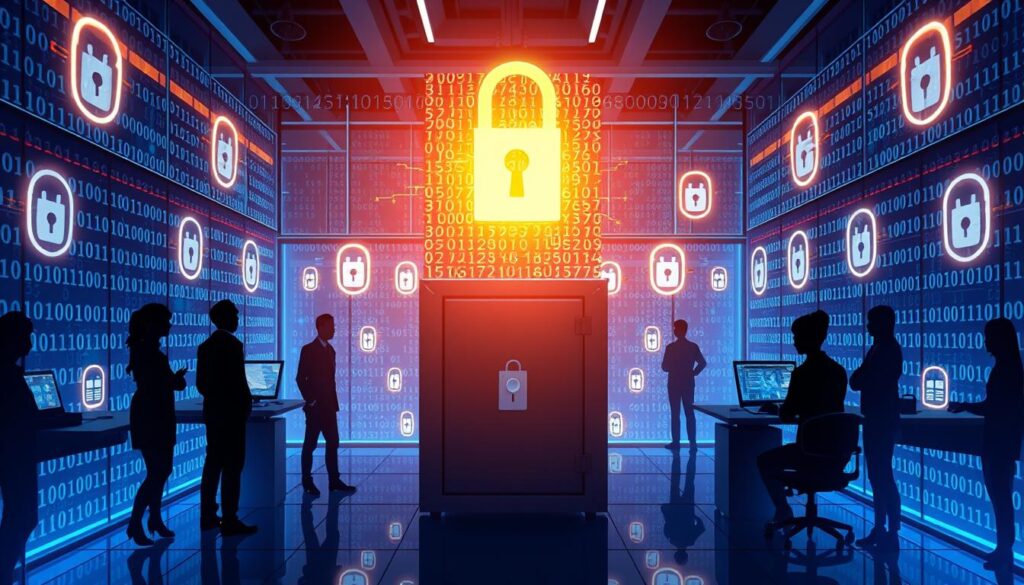
By using good cybersecurity practices and focusing on cyber compliance, companies can lower cyber attack risks, protect data, and keep customer trust. This can be done by following the best practices in the cybersecurity guide and making sure they follow the rules12.
Implementing an Effective Compliance Strategy
Creating a solid compliance strategy is key for companies to meet cybersecurity compliance importance and follow importance of cybersecurity regulations. This means doing regular risk checks, setting up security measures, and always looking to improve. The GDPR can fine companies up to 4% of their yearly sales or €20 million, whichever is more, for not following the rules13. HIPAA also has big fines for breaking its rules, with amounts that depend on how bad the violation is13.
A good compliance plan should have a few main parts:
- Regular risk assessments to find out where you might be weak
- Putting in place security controls to lessen those risks
- Keeping an eye on things and making changes as needed to stay in line
By focusing on compliance, companies can make sure their cybersecurity is up to date and meets the rules. This helps avoid cyber attacks and keeps important data safe. As the first source says, a data breach can hurt customer trust and harm future earnings14. The third source also points out that not following the rules can lead to even bigger fines if you’re found out in more than one area15.
In short, a strong compliance plan is vital for companies to handle cybersecurity compliance importance and stick to importance of cybersecurity regulations. By following these steps and using the right data, companies can lower their risk of cyber attacks and keep their data safe. As the second source explains, keeping an eye on things with automated tools is key under FISMA to catch and fix security issues fast13. The first source also mentions that using these tools can cut down on compliance costs by about 33%14.
Conclusion: Building a Compliance-First Security Culture
In the world of cybersecurity, why compliance matters is very important. By focusing on compliance, companies can make sure their security measures are up to date. This helps protect against cyber threats and keeps data safe.
Experts like Viet Minh Nguyen stress the need for a compliance-first culture. This means putting compliance first in security efforts.
Not following rules like GDPR can lead to big fines. Companies could face up to €20 million or 4% of their global revenue in penalties16. On the other hand, those who focus on compliance can build trust with customers. This can give them an edge over competitors16.
Using multi-factor authentication and constant monitoring are key to a strong security culture16.
By choosing compliance first, companies can keep customer trust and protect data. This approach also helps reduce cyber attack risks. It aligns with the benefits of cybersecurity compliance, such as better reputation and legal safety.
As we look ahead, it’s vital to blend security into quality management systems. This can boost business performance by up to 45%17.
FAQ
What is the importance of compliance in cybersecurity?
What are the key components of a compliance program in cybersecurity?
What are the major regulatory frameworks and standards in cybersecurity compliance?
What are the consequences of non-compliance in cybersecurity?
How can organizations implement an effective compliance strategy in cybersecurity?
What is the role of cybersecurity governance and compliance in protecting sensitive data?
How can organizations ensure they are meeting cybersecurity regulatory requirements?
What are the benefits of implementing cybersecurity compliance best practices?
How can organizations build a compliance-first security culture?
Source Links
- 52 Cybersecurity Tips for Personal or Business Application You Need in 2019 – https://www.drizgroup.com/driz_group_blog/52-cybersecurity-tips-for-personal-or-business-application-you-need-in-2022
- Cyber Snap Tip#9 with Viet: “Compliance vs. Cybersecurity: Endless Debate or Actionable Insight?” – https://www.linkedin.com/pulse/cyber-snap-tip9-viet-compliance-vs-cybersecurity-viet-minh-nguyen-e3fyc?trk=articles_directory
- Cybersecurity Compliance 101: A Complete Guide | Rippling – https://www.rippling.com/blog/cybersecurity-compliance
- Cyber Security Compliance: What Every Business Needs to Know – https://sprinto.com/blog/cyber-security-compliance/
- What Is Cybersecurity Compliance and Why It Is Needed » Concertium – https://concertium.com/what-is-cybersecurity-compliance/
- Cybersecurity Compliance: Avoid Fines and Legal Action | ConnectWise – https://www.connectwise.com/resources/msp-cybersecurity-challenges/ch5-compliance-regulations
- What Is Cybersecurity Compliance | CompTIA – https://www.comptia.org/content/articles/what-is-cybersecurity-compliance
- What is Compliance in Cybersecurity? Frameworks and Best Practices – https://www.cimcor.com/blog/what-is-compliance-in-cybersecurity-frameworks-and-best-practices
- 15 Regulatory and Security Compliance Frameworks to Secure Your Business | Secureframe – https://secureframe.com/hub/grc/compliance-frameworks
- The Importance of Cybersecurity Compliance – https://ignitionit.com/importance-of-cyber-security-compliance-igt/
- Cyber Compliance 101 – What It Is and Why It’s Needed – https://www.in.gov/cybersecurity/blog/posts/cyber-compliance-101-what-it-is-and-why-its-needed/
- Think Cybersecurity Compliance is Boring? Think Again! – https://www.mega.com/blog/what-is-cybersecurity-compliance
- 6 Steps to Cyber Security Compliance Alignment – https://www.cynet.com/cybersecurity/cyber-security-compliance-6-steps-to-security-compliance-alignment/
- 7 Ways To Build A Cybersecurity Compliance Plan – https://www.complianceonline.com/resources/cybersecurity-compliance-plan.html
- What is Compliance Management in Cybersecurity? | UpGuard – https://www.upguard.com/blog/what-is-compliance-management
- The Strategic Benefits of Cybersecurity Compliance – https://www.nri-secure.com/blog/cybersecurity-compliance
- Compliance to Culture in Information and Cybersecurity – https://labs.sogeti.com/from-compliance-to-culture-a-paradigm-shift-in-the-information-and-cybersecurity-mindset/
